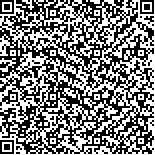| 本文已被:浏览 865次 下载 275次 |

码上扫一扫! |
| 羽衣甘蓝花青素的定位及含量成分测定 |
|
王玉书1,2,赵爽1,张琳1,崔剑英1,王紫薇1,曲美卓玛1,高岩松1,辛喜凤3
|
|
|
| (1.齐齐哈尔大学 生命科学与农林学院, 黑龙江 齐齐哈尔 161006;2.黑龙江省抗性基因工程与寒地生物多样性保护重点实验室, 黑龙江 齐齐哈尔 161006;3.河北省保定市农产品质量监督管理站, 河北 保定 071000) |
|
| 摘要: |
| 为鉴定羽衣甘蓝植株中花青素的分布及组成,利用徒手切片制作临时装片在光学显微镜下观察紫叶羽衣甘蓝和白叶羽衣甘蓝纯系茎和叶中花青素的分布情况,测定紫叶羽衣甘蓝叶片中花青素相对含量,并通过HPLC-MS技术对叶片中花青素成分进行分析。结果表明:花青素主要分布于叶表皮细胞邻近的叶肉细胞,并以下表皮邻近叶肉细胞居多,茎中花青素集中分布在表皮细胞及表皮下的薄壁细胞中,整个茎表现为越靠近上部花青素分布越少;白叶羽衣甘蓝心叶、外叶和茎中均未观察到花青素类物质的存在。在10 ℃条件下生长的叶片(心叶和外叶)中花青素含量显著高于20 ℃条件中生长的叶片中的含量。紫叶羽衣甘蓝中共鉴定出9 种花青素苷,分别为矢车菊素-3-葡萄糖-5-葡糖苷、矢车菊-3-槐糖-5-葡糖苷、矢车菊素-3-槐糖(对香豆酰)-5-葡糖苷、矢车菊素-3-槐糖(咖啡酰)-5-葡糖苷、矢车菊素-3-槐糖(阿魏酰)-5-葡糖苷、矢车菊素-3-槐糖(草酸酰-对羟基苯甲酰)-5-葡糖苷、矢车菊素-3-槐糖(芥子酰)-5-葡糖苷、飞燕草-3-葡糖苷和飞燕草素-3-葡萄糖(咖啡酰)-5-葡糖苷。紫叶羽衣甘蓝叶片中含有丰富的高度酰基化和糖苷化的花青素苷,是一种值得开发的新型花青素苷应用产品资源。 |
| 关键词: 羽衣甘蓝 花青素 切片 HPLC-MS 含量 成分 |
| DOI:10.11841/j.issn.1007-4333.2020.11.05 |
| 投稿时间:2019-09-05 |
| 基金项目:国家自然科学基金(31401908);黑龙江省自然科学基金(C2016056);黑龙江省普通高等学校青年创新人才培养计划(UNPYSCT-2017155);黑龙江省省属高等学校基本科研业务费(135209313);齐齐哈尔大学大学生创新创业项目(201910232346,21910232118,202010232104,202010232197,202010232801) |
|
| Location, content and composition determination of anthocyanin in kale |
|
WANG Yushu1,2,ZHAO Shuang1,ZHANG Lin1,CUI Jianying1,WANG Ziwei1,Qumeizhuoma1,GAO Yansong1,XIN Xifeng3
|
| (1.College of Life Sciences, Agriculture and Forestry, Qiqihaer University, Qiqihaer 161006, China;2.Heilongjiang Provincial Key Laboratory of Resistance Gene Engineering and Pretection of Biodiversity in Cold Areas, Qiqihaer 161006, China;3.Agricultural Product Quality Supervision and Administration Station in Baoding City of Hebei Province, Baoding 071000, China) |
| Abstract: |
| To identify the distribution and composition of anthocyanins in kale, the distribution of anthocyanins in stems and leaves in purple and white-leaved kale was observed under light microscope by hand sectioning, and the content of anthocyanins in leaves of purple-leaved kale was determined. The components of anthocyanins in leaves were analyzed by HPLC-MS. The results showed: That anthocyanins of purple leaf kale were mainly distributed in mesophyll cells adjacent to leaf epidermis cells, and mostly in mesophyll cells adjacent to lower epidermis. In stem, anthocyanins were concentrated in epidermis cells and parenchyma cells underneath epidermis. The closer the whole stem was to the upper part, the less the distribution of anthocyanins was. Anthocyanins were not observed in the inner, outer leaves and stems of kale, but chlorophyll layers were detected at the same location. After growing at 10 ℃, the anthocyanin content in leaves(inner and outer)was significantly higher than that at 20 ℃. Nine anthocyanin glycosides were identified from purple kale, they were cyanidin-3-glucoside-5-glucoside, cyanidin 3-sophoroside-5-glucoside, cyanidin 3-sophoroside(coumaryl)-5-glucoside, cyanidin 3-sophoroside(caffeoyl)-5-malonylglucoside, cyanidin 3-sophoroside(feruloyl)-5-glucoside, cyanidina-3-sophoroside(oxalate-p-hydroxybenzoyl)-5-glucoside cyanidin 3-sophoroside(coumaryl)-5-glucoside, delphinidin 3-glucoside, and delphinidin 3-glucoside(caffeoyl)-5-glucoside. In conclusion, the purple kale is highly rich in acylated and glycosylated anthocyanidins, it is a new kind of anthocyanin application product resources worth developing. |
| Key words: kale anthocyanin section HPLC-MS content composition |